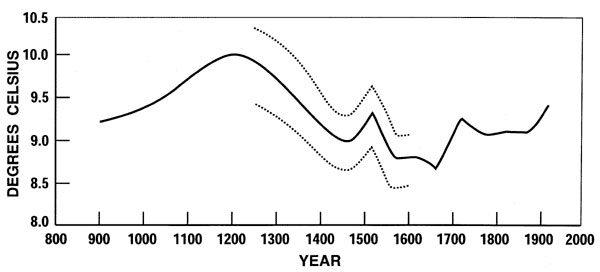Volume 6, Number 1—February 2000
Perspective
From Shakespeare to Defoe: Malaria in England in the Little Ice Age
Figure 1

Figure 1. Estimated mean annual temperatures (°C) prevailing in central England since A.D. 800. These are 50-year averages, based on a variety of proxy data (see text). Dotted lines indicate the range of apparent uncertainty of the derived values.
1St. Thomas' Hospital (1213), in the Borough of Lambeth, was on the edge of the River Thames, surrounded by tidal marshes. Parliament met in two buildings at a similar site in the Borough of Westminster, directly across the river. Both areas were notoriously malarious. Centuries later, the American Founding Fathers followed British parliamentary procedure in choosing a site for their new nation's capital at the edge of a malarious swamp, later referred to as "A Mud-hole Equal to the Great Serbonian Bog." The Serbonian Bog probably refers to the vast flood plains of the Danube that border northern Serbia and Bulgaria. The Balkan region was the last major stronghold of malaria in Europe. Malaria was finally eliminated there in 1975.